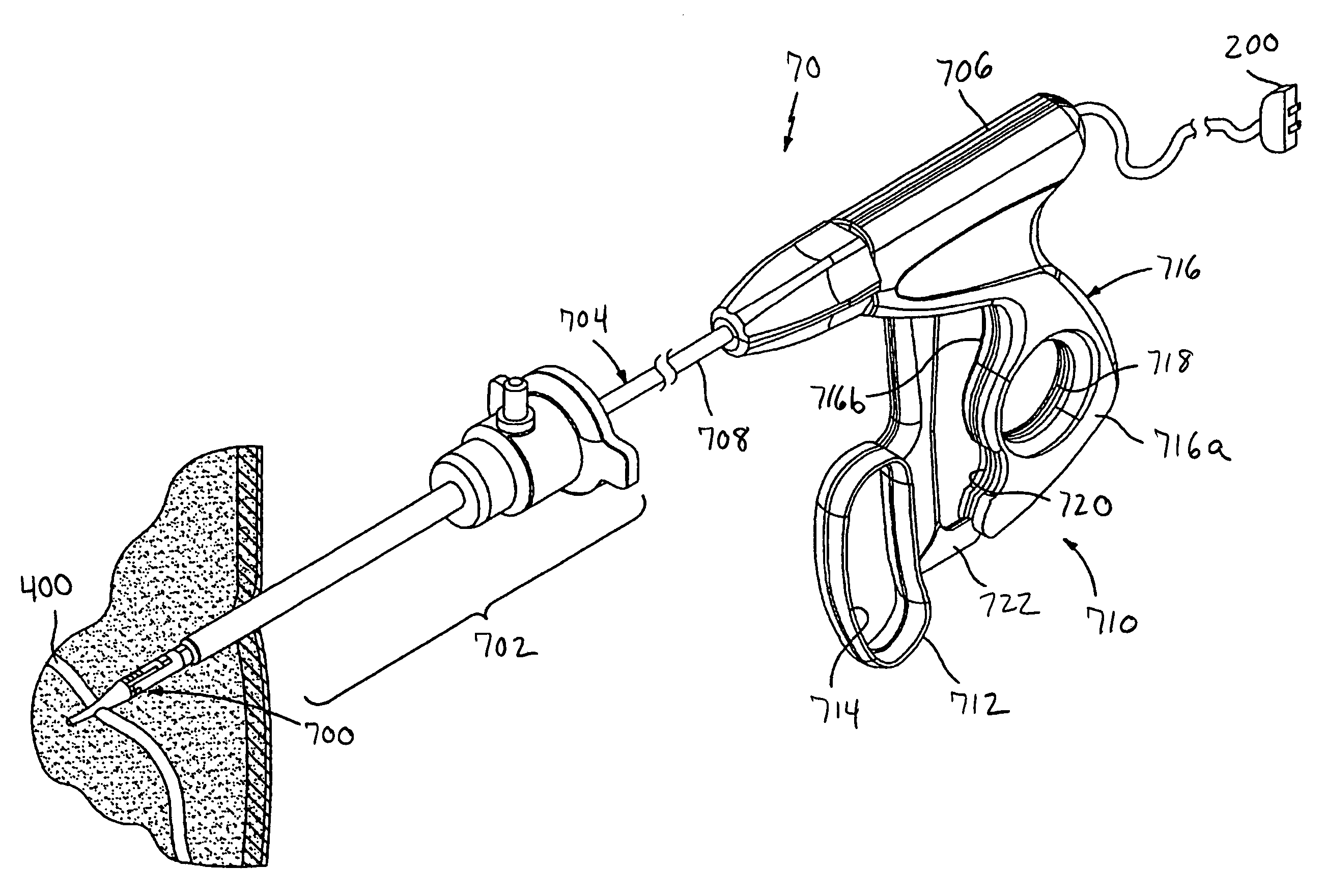Vessel sealing system using capacitive RF dielectric heating
a dielectric heating and valve technology, applied in the field of electrosurgical systems, can solve the problems of thermal damage to healthy tissue adjacent to the operative site, unfavorable tissue sealing or fusion, and undesirable collateral damage to tissue, so as to reduce thermal spread, eliminate arcing, and ensure the effect of sealing
- Summary
- Abstract
- Description
- Claims
- Application Information
AI Technical Summary
Benefits of technology
Problems solved by technology
Method used
Image
Examples
Embodiment Construction
[0027]Embodiments of the present disclosure will be described herein below with reference to the accompanying drawings. In the following description, well-known functions or constructions are not described in detail to avoid obscuring the disclosure in unnecessary detail. In the figures, like reference numerals represent like elements.
[0028]An electrosurgical system for sealing vessels using capacitive (RF) dielectric heating and a method thereof are provided. Capacitive RF dielectric heating is employed in an electrosurgical system to heat / desiccate tissue for sealing purposes. Generally, a high voltage RF frequency AC signal is applied to a set of parallel electrodes on opposite sides of a dielectric, e.g., tissue or electrode coatings, forming a capacitive circuit. A tissue to be sealed is sandwiched or placed between the electrodes so that an AC displacement current flows through the tissue as a result of polar molecules in the tissue aligning and rotating in opposite fashion to...
PUM
| Property | Measurement | Unit |
|---|---|---|
| frequencies | aaaaa | aaaaa |
| frequencies | aaaaa | aaaaa |
| frequencies | aaaaa | aaaaa |
Abstract
Description
Claims
Application Information
 Login to View More
Login to View More - R&D
- Intellectual Property
- Life Sciences
- Materials
- Tech Scout
- Unparalleled Data Quality
- Higher Quality Content
- 60% Fewer Hallucinations
Browse by: Latest US Patents, China's latest patents, Technical Efficacy Thesaurus, Application Domain, Technology Topic, Popular Technical Reports.
© 2025 PatSnap. All rights reserved.Legal|Privacy policy|Modern Slavery Act Transparency Statement|Sitemap|About US| Contact US: help@patsnap.com



